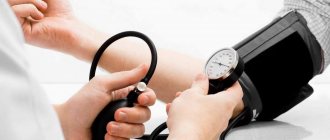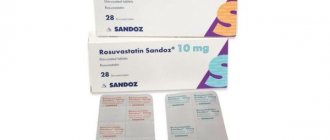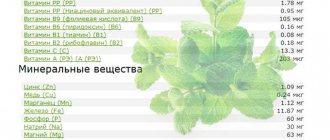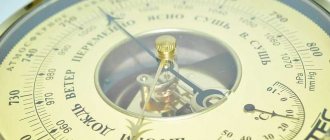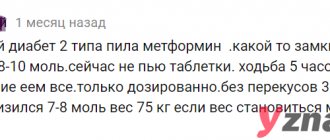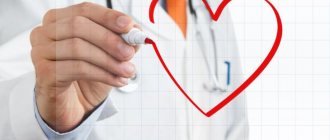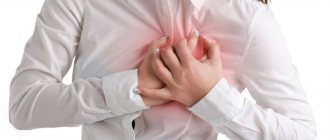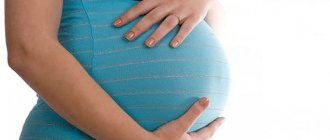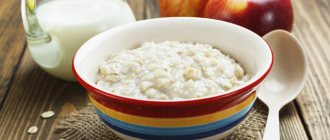Diet number 10 for hypertension: nutrition table for hypertensive patients
The main requirement of diet No. 10 for hypertensive patients is to limit or refuse salt intake and reduce the volume of liquid drunk (maximum 1.2).
In addition, table number 10 implies a reduction in calorie intake. Thanks to this menu, the body is saturated with magnesium, potassium, alkaline compounds that reduce acidity, and lipotropic elements. The latter are involved in the metabolism of fats, preventing them from being deposited in the liver.
Diet No. 10 states that the best way to process food is baking, steaming and boiling. And foods that are difficult for the stomach to digest are best removed from the diet altogether.
Table No. 10 for hypertension implies strict adherence to the regularity of meals - 5-6 times a day. The calorie content of dishes eaten per day is a maximum of 2500 kcal. And the amount of salt that can be consumed during the day is 4-6 grams.
According to the chemical composition, the daily menu scheme is as follows:
- fats – 70 g, of which 20% are vegetable;
- carbohydrates – 400 g;
- proteins – 90 g, of which 50% are animal.
Hypertension Diet 10: BASIC PRINCIPLES
The basic principles of the diet are frequent split meals (5-6 times a day) and differentiation of the diet into 2 subtypes: 1) For people with excess body weight. It differs in that the number of calories is reduced to 2200 kcal per day; the ratio of proteins, fats and carbohydrates, respectively, is 90g/70g/300g. 2) For people with normal body weight. Their calorie content is 2600-2700 kcal per day, and the ratio of proteins, fats and carbohydrates is 100-110g/80g/350-400g.
Hypertension is one of the most common diseases in the world today. One of the unpleasant aspects of arterial hypertension is that once it occurs, it never goes away. Treatment will continue throughout your life. But you need to take into account that this should not only be drug therapy. Very often, people who discover they have hypertension rush to extremes. Sometimes they buy a bunch of drugs and place all their hopes on the miracles of pharmacology. As a result, this does not always lead to the expected result.
let's figure it out - why?
A huge percentage of hypertensive patients are overweight. Sometimes one of the fundamental factors in the development of hypertension is precisely excess body weight. But how does this even relate? The fact is that adipose tissue, which accumulates in our body over the years, is, oddly enough, a secretory organ. Excess fat can not only spoil our mood, but also synthesize various hormones.
One of these hormones is angiotensinogen. It causes vasospasm, which consequently leads to an increase in blood pressure. In addition, angiotensinogen promotes the production of aldosterone. This hormone is the basis of the RAAS (renin-angiotensin-aldosterone system), which regulates the functions of vasoconstriction and dilation.
Normally, our body works very organically. All the hormones in it are necessary and important. But excess adipose tissue leads to their hypersecretion, and a distortion occurs. As a result, more and more hormones are produced that constrict blood vessels and increase blood pressure.

In addition, excess adipose tissue synthesizes the hormone leptin. This is a hunger hormone, to put it simply. And the more adipose tissue accumulates, the more leptin is synthesized. Very often, overweight people complain of a constant feeling of hunger and lack of satiety even after a recent snack. Leptin is to blame for this.
Another disadvantage of excess fat in the body is that they are all penetrated by a capillary network. This results in an additional fatty depot of blood. All this excess of small vessels is very poorly controlled with medication. Therefore, it is much more difficult to select high-quality antihypertensive therapy for obese people.
Bottom line: excess body weight is unhealthy. It is a risk factor for the development of hypertension and type 2 diabetes. In addition, this is also a load on the joints, spine and blood vessels. Therefore, excess weight needs to be reduced.
Normal or overweight?
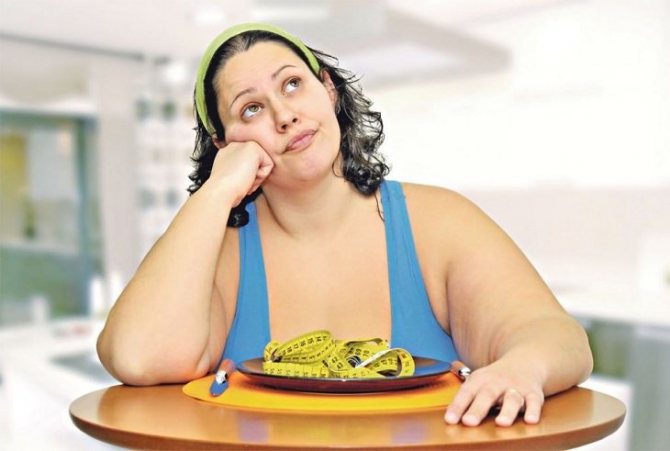
In order to follow a diet correctly, you need to understand some things about yourself and your body. In particular, you must classify yourself as one of the groups identified in this diet. That is, you need to understand whether you belong to the group with normal body weight or to the group with overweight.
What criteria are used to determine whether a person is overweight or not? First of all, you need to know your BMI - body mass index. This criterion has been introduced for quite some time and is generally accepted.
It is calculated using a simple formula: Body weight (in kg) / height squared (in meters)
Example: Height –1.64 m, weight – 80 kg 80/1.64*1.64=29.7 (closer to 28) According to the criteria below, a person is overweight.
BMI criteria
| 16-18 | underweight, which is also not very good |
| 18-25 | generally accepted norm |
| 25-30 | overweight (already worth thinking about) |
| 30-35 | first degree obesity |
| 35-40 | second degree obesity |
| over 40 | third degree obesity (morbid) |
Morbid obesity is a fairly serious disease that significantly worsens the standard of living and its quality. As a result, with morbid obesity, a person begins to have problems with movement.
Waist
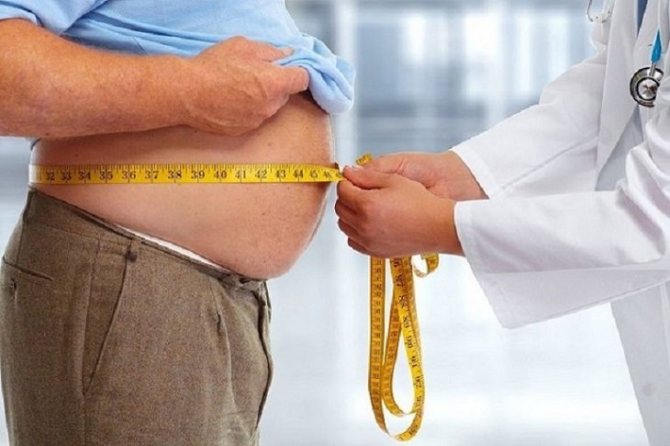
In addition to BMI, waist size is also taken into account.
For women, the upper limit of the norm is a volume of 80 cm. 80-87 cm is already the line at which you should think about your health. If your waist circumference exceeds 87 cm, then you definitely need to lose weight, since this indicator already indicates obesity.
For men, the norm is a waist size of up to 94 cm; 94-101 cm already signals a possible problem. A volume above 102 cm is considered obese and requires weight loss.
Why is waist size so important in determining obesity, and not hip size, for example? It is waist circumference that allows you to determine excess visceral fat. Visceral fat itself is a completely necessary device in the body. It protects internal organs from injury. But its excess makes it difficult to supply these same organs with blood and lymph, which leads to shortness of breath, hypertension, and liver problems.
Therefore, following diet number 10 is one of the important factors in maintaining the body of a hypertensive patient in good shape, a way to reduce the amount of visceral fat in the body and reduce the overall risk of fatal events.
Harmful and healthy foods
To understand what table number 10 allows for hypertension and what you need to avoid, you need to consider the following food products. So, regarding baked goods, then it is better to eat yesterday’s slightly dried bread, baked from 1-2 grades of wholemeal flour.
Table No. 10 does not allow the inclusion of puff pastry products and baked goods in the diet, because they are made from premium flour, which contains a lot of sugar and margarine. You still can’t eat pancakes and pancakes, as they are fried in more oil during the cooking process.
The meat should not be fatty:
Goose and duck meat should be abandoned. In addition, it is not advisable to eat offal (animal entrails).
Moreover, it should be prepared only after preliminary cooking. That is, the meat must be cleaned of fascia and tendons, and then slightly cooked and the fatty water drained. Afterwards the product is prepared according to the chosen recipe.
You can make meatballs, cutlets from the meat, bake it or throw it into soup and even fry it a little in a minimal amount of fat. But it is advisable to avoid sausages, canned food and smoked meats altogether.
For hypertension, diet No. 10 allows you to eat no more than 1 egg per day. You can make a baked or steamed omelette from it or soft-boil it. It is advisable to avoid fried or hard-boiled eggs.
You can also eat fish, but only lean fish. It should be prepared as follows:
- fry after cooking;
- bake;
- cook;
- give in to steam treatment.
And caviar, fatty, smoked or salted fish should not be included in the diet. The same rule applies to all legumes.
Regarding dairy products, the main requirement is that they should not be fatty, not salty, without spices and sugar. According to this rule, for hypertension, diet number 10 prohibits including in the daily diet:
- cream;
- salted cheese;
- sour cream;
- fatty cottage cheese;
- sweet cheeses;
- store-bought yoghurts.
Vegetables are best baked or boiled, but sometimes they can be eaten raw. At the same time, green peas and white cabbage can be eaten in limited quantities. In addition, if you have hypertension, you should avoid:
- sorrel;
- pickled and salted vegetables;
- spinach;
- onions;
- garlic;
- mushrooms;
- radish.
Table No. 10 allows the consumption of pasta and cereals, but subject to proper preparation. Therefore, salt, fat and sugar should not be added to such food, and it is better to cook everything in milk or water.
If you have hypertension, you can eat fruits, but it is better to choose soft varieties that do not irritate the gastrointestinal tract. Dried fruits are allowed, but products with coarse fiber are undesirable.
Diet No. 10 does not prohibit eating sweets, but in moderation. But you should avoid certain desserts:
- buns;
- chocolate;
- cakes with cream and buttercream.
If desired, hypertensive patients can pamper themselves with mousses, jam, sweets (not chocolate), honey, marmalade and jelly.
Butter and vegetable oil are allowed in minimal quantities. Lamb, beef and pork fat should be abandoned.
If you have hypertension, you can eat sauces, but not more than 150 grams per day. Thus, tomato, dairy, vegetable and sour cream dressings are allowed. And you should avoid sauces made from mushrooms, fish, meat and mayonnaise.
Diet No. 10 does not prohibit seasoning food with spices such as cinnamon, bay leaf, vanillin and citric acid. However, hot peppers, horseradish and mustard are not allowed.
As for drinks, you cannot drink natural coffee and cocoa, but black tea is acceptable in small quantities. Alcohol and sweet carbonated drinks are also prohibited. It is best to drink low-fat milk, rosehip decoction, fresh juices, compotes and jelly.
Diet No. 10 (Table No. 10). Food
What can you eat on diet number 10:
Soups: vegetarian with various cereals, with potatoes, vegetables, beetroot soup, also milk and fruit soups.
Read also Diet No. 15 (table No. 15): nutrition for the transition from a therapeutic diet to a regular diet
Cereals: any, cooked in water or milk, pasta is also possible.
Vegetables, greens: boiled or baked vegetables, rarely raw: potatoes, cauliflower, lettuce, cucumbers, tomatoes, carrots, beets, zucchini, pumpkin. Limited to white cabbage and green peas. You can add dill, parsley and green onions to dishes.
Meat, fish: lean meats (beef, veal, chicken, turkey) and fish. To cook, meat or fish must be boiled and then baked or fried. You can also prepare aspic.
The consumption of dietary sausage is limited.
Eggs: 1 egg per day, but provided it is cooked soft-boiled, omelet (steamed, baked or white) or as an addition to dishes.
Fresh fruits and berries: fresh ripe fruits and berries, also dried fruits.
Dairy products: milk, kefir, cottage cheese and dishes made from it. Sour cream, cream and cheese – limited.
Sweets: jellies, mousses, jelly, creams, honey, jam and non-chocolate candies.
Flour products: wheat bread made from grade 1 and 2 flour, yesterday's baked goods, dietary salt-free bread, savory cookies and biscuits.
Fats: vegetable, butter and ghee.
Drinks: weak tea, coffee drinks with milk, juices (fruit and vegetable), rose hip decoction. Grape juice – limited.
What not to eat on diet number 10:
- fatty, salty and fried foods;
- fresh bread, pastry, puff pastry;
- legume dishes, meat, fish and mushroom broths;
- canned foods, salted, pickled and pickled vegetables;
- radish, radish, spinach, sorrel, garlic, onions, mushrooms;
- fruits and berries with coarse fiber;
- fatty meats and fish, lard, liver, kidneys, brains, smoked meats, sausages, canned meat and fish, salted and smoked fish, caviar;
- strong tea, natural coffee, cocoa;
- chocolate, cakes, ice cream;
- alcoholic drinks.
Read also Tonometer. How to measure blood pressure with a tonometer
Table No. 10: menu for 7 days
Using approved products, you can create an approximate menu for a week for hypertension.
- For breakfast, you can drink a drink with chicory and eat a steamed omelette with oatmeal.
- Lunch – fruit puree.
- Lunch – meatless soup with noodles, 150 g of baked beef, 1 piece of bread (dried), uzvar.
- Afternoon snack – persimmon.
- Dinner – vegetable stew, steamed fish cutlet, rosehip drink.
- Before going to bed, you can drink 200 ml of low-fat kefir.
On Tuesday, diet No. 10 suggests having breakfast with rice porridge with vegetables (cauliflower, carrots), cottage cheese casserole and weak tea. For lunch you can eat one banana, and for lunch buckwheat soup, boiled chicken breast, toast and fruit compote.
An ideal afternoon snack is “Maria” cookies (3 pcs.) and rosehip decoction. Baked fish, mashed potatoes and uzvar are suitable for dinner. Before going to bed, you can drink 250 ml of yogurt.
- Breakfast – 1 soft-boiled egg, pasta with sour cream sauce, drink with chicory.
- Lunch – baked pear and apple.
- Lunch – barley soup, a piece of bread, pork roll with vegetables, jelly.
- Afternoon snack – 1 non-chocolate candy, rose hip decoction.
- Dinner – steamed turkey cutlet, stewed zucchini, tea (not strong) and casserole with fruit.
- Before going to bed, you are allowed to eat a few pieces of fruit.
On Thursday for tomorrow, Diet No. 10 offers baked rabbit, barley porridge with vegetable gravy and fresh juice. Berries are suitable for lunch, and fish, beetroot soup, 1 piece of bread and uzvar are suitable for lunch.
During the afternoon snack, diet No. 10 allows you to eat a jelly dessert, and for dinner - 1 soft-boiled egg, baked potato, boiled cabbage (broccoli, cauliflower) and wash it all down with weak tea. And before going to bed, it is advisable to drink 250 ml of kefir.
On Friday, table number 10 offers breakfast with a baked omelette, semolina porridge with pieces of fruit and rosehip decoction. For lunch - 1 banana, and for lunch buckwheat soup, baked meat and jelly.
Afternoon snack – a piece of biscuit and rosehip decoction. During dinner, you can drink weak tea, eat pilaf and boiled beets. Before going to bed, it is better to eat low-fat cottage cheese with dried apricots or prunes.
- Breakfast - oatmeal, fresh juice, boiled chicken fillet.
- Lunch – weak tea, toast with jam.
- Lunch – vegetable stew, millet soup, steamed fish cutlet and compote.
- Afternoon snack – fruit.
- Dinner – 1 soft-boiled egg, barley porridge and seaweed.
- Before bed – rice porridge with milk.
On Sunday, table number 10 offers to repeat the menu of any of the days described above. A specialist will tell you what a diet for hypertension should be in the video in this article.
Features of diet number ten for hypertensive patients
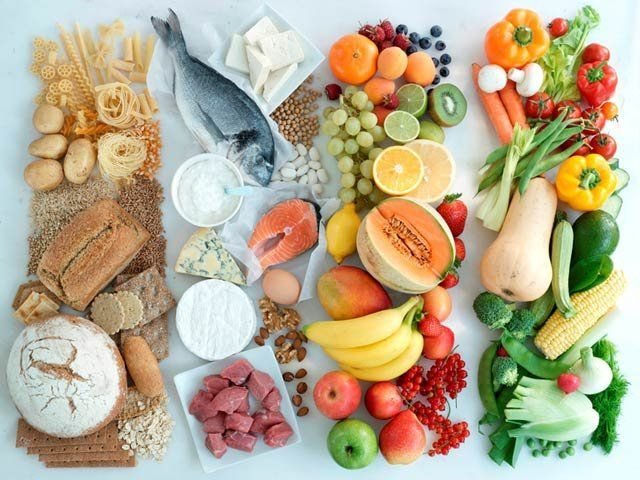
Table No. 10 of the diet adheres to a salt-free regime; food can only be salted just before consumption in small quantities. List of products included in table No. 10:
- bread made from wheat and rye flour, biscuits, homemade cakes without the use of salt;
- fresh cabbage soup, borscht, vegetable, dairy, and fruit soups;
- lean meat, boiled fish or poultry, seafood, natural cottage cheese with zero fat content, all dairy products, unsalted cheese, sour cream;
- soft-boiled eggs (no more than three in seven days);
- porridge from buckwheat, oatmeal, millet (it is better to avoid other cereals);
- cabbage, carrots, pumpkin, potatoes, peas, eggplants and zucchini, greens;
- When it comes to salads, pay more attention to vinaigrette, as well as seaweed. Fruit salad will be very useful;
- berries, fresh or dried fruit compote;
- lemon or milk tea, coffee drink, juices;
- Small doses of oil can be used for cooking.
Diet 10 strictly prohibits the consumption of puff pastries or baked goods, fatty fish or meat broths, canned goods, salted cheese, radishes, sorrel, chocolates, mushrooms, fatty cakes, ice cream and more.
Arterial hypertension is a reason to think about this diet. If you constantly monitor your diet, you can get rid of the unpleasant consequences of the disease.
DASH diet for hypertension
The basic principles of the diet are frequent split meals (5-6 times a day) and differentiation of the diet into 2 subtypes: 1) For people with excess body weight.
It differs in that the number of calories is reduced to 2200 kcal per day; the ratio of proteins, fats and carbohydrates, respectively, is 90g/70g/300g. 2) For people with normal body weight. Their calorie content is 2600-2700 kcal per day, and the ratio of proteins, fats and carbohydrates is 100-110g/80g/350-400g. Hypertension is one of the most common diseases in the world today. One of the unpleasant aspects of arterial hypertension is that once it occurs, it never goes away. Treatment will continue throughout your life. But you need to take into account that this should not only be drug therapy.
A huge percentage of hypertensive patients are overweight. Sometimes one of the fundamental factors in the development of hypertension is precisely excess body weight. But how does this even relate? The fact is that adipose tissue, which accumulates in our body over the years, is, oddly enough, a secretory organ. Excess fat can not only spoil our mood, but also synthesize various hormones.
One of these hormones is angiotensinogen. It causes vasospasm, which consequently leads to an increase in blood pressure. In addition, angiotensinogen promotes the production of aldosterone. This hormone is the basis of the RAAS (renin-angiotensin-aldosterone system), which regulates the functions of vasoconstriction and dilation.
Normally, our body works very organically. All the hormones in it are necessary and important. But excess adipose tissue leads to their hypersecretion, and a distortion occurs. As a result, more and more hormones are produced that constrict blood vessels and increase blood pressure.
In addition, excess adipose tissue synthesizes the hormone leptin. This is a hunger hormone, to put it simply. And the more adipose tissue accumulates, the more leptin is synthesized. Very often, overweight people complain of a constant feeling of hunger and lack of satiety even after a recent snack. Leptin is to blame for this.
Another disadvantage of excess fat in the body is that they are all penetrated by a capillary network. This results in an additional fatty depot of blood. All this excess of small vessels is very poorly controlled with medication. Therefore, it is much more difficult to select high-quality antihypertensive therapy for obese people.
Bottom line: excess body weight is unhealthy. It is a risk factor for the development of hypertension and type 2 diabetes. In addition, this is also a load on the joints, spine and blood vessels. Therefore, excess weight needs to be reduced.
In order to follow a diet correctly, you need to understand some things about yourself and your body. In particular, you must classify yourself as one of the groups identified in this diet. That is, you need to understand whether you belong to the group with normal body weight or to the group with overweight.
What criteria are used to determine whether a person is overweight or not? First of all, you need to know your BMI - body mass index. This criterion has been introduced for quite some time and is generally accepted.
It is calculated using a simple formula: Body weight (in kg) / height squared (in meters)
Example: Height -1.64 m, weight -80 kg80/1.64*1.64=29.7 (closer to 28)According to the criteria below, a person is overweight.
A list of dishes and products that are recommended for consumption or require minor adjustments in composition.
Historically, we traditionally eat soups for lunch, and without liquid this meal seems incomplete to us. Soups are good because they are mostly low in calories, contain a lot of vegetables and are easily filling due to their volume.
For hypertension, it is advisable to choose low-fat soups. They should be based primarily on vegetable broth, even if it is borscht or cabbage soup. Now there are so many options for aromatic spices to make your soup tasty and fragrant without adding fatty pork or beef.
I will make a reservation that if you are overweight, try to minimize the amount of starchy vegetables in the soup, such as potatoes, carrots, beets, and eggplants. Dilute your diet with puree soups. They are quite filling and, most often, cooked in vegetable broth.
Examples of dishes: vegetable puree soup from broccoli or cauliflower, cabbage soup in vegetable broth, beet soup, lentil soup, noodle soup with mushrooms, cabbage soup, green borscht with sorrel, bean soup, rice soup.
BUT! If you, due to illness, are prone to swelling, soups should be limited. The norm is 200 ml per day. This is an ordinary small portion of soup in any cafe. If you are not a fan of soups, you can completely exclude them from your diet, but I do not recommend it. Still, soups satiate well and remove the feeling of hunger, which is important for obesity.
Bread and pastries
For people with normal body weight: You can safely eat bread made from rye and wheat flour. It's better to do this in small quantities. Also, if you succeed, you can replace such bread with bran bread. For lovers of buns: ideally, you can eat dry, insipid cookies like biscuits; curd cookies are also allowed.
But! It is imperative to pay attention to the fact that the composition does not contain margarine and palm oil. These products are contraindicated for you. Homemade pies with fish, lean meat - yes! You can even have this deliciousness.
The most important rule is that baked goods should not be fried in oil. I also don’t recommend Ossetian pies, which have become so popular lately. Very often, the manufacturer, in order to save on the production process, uses margarine for filling.
For people with excess body weight, it is better to leave only bread with bran in their diet. Although it has the same calorie content as regular wheat flour bread, it contains more complex carbohydrates, which will keep you full for a much longer time.
It's harder with buns. Buns, pies, cakes - all this will have to be completely excluded from the diet. But! Glory to the Internet! Nowadays there are a huge number of recipes for low-calorie desserts and baked goods made from bran. If you absolutely cannot live without sweets, then I recommend trying to make cottage cheese and fruit casseroles. It's both tasty and healthy.
Baking is a source of carbohydrates. Our body loves carbohydrates very much - it is much easier to extract energy from them than from proteins and fats. But, saturated only with simple carbohydrates (white bread and other buns), we risk gaining extra pounds. However, under no circumstances should the body be deprived of this source.
In order not to experience a deficiency in them, try to replace simple carbohydrates with complex ones. This means you need to eat more foods containing fiber. Fiber improves intestinal motility, slows down the absorption of glucose and reduces cholesterol levels, which is important for hypertension. In this regard, bran bread and whole grain bread are just the thing!
Fish is an amazing product that should definitely be included in your diet. It helps saturate the body with potassium, which is very useful for high blood pressure. Fish also contains phosphorus, which improves brain function and cerebral circulation. Some types of fish also contain selenium. This microelement improves the elasticity of muscle fibers and blood vessels in particular.
Well, the famous omega acids, where would we be without them? Now they are very popularized in the media. Regarding omega acids, there is a big misconception that they can only be obtained by eating red fatty fish (salmon, sockeye salmon). But that's not true. If your wallet does not allow you to often prepare dishes from red fish, then you need to know that ordinary herring and mackerel contain exactly the same amount of available omega acids as red fish varieties. In your choice, focus on fish that live in the northern seas.
Moreover, lipidologists advise not to replace natural sources of fatty acids with their pharmaceutical analogues. Simply put, you can buy capsules with omega-3 and fish oil at the pharmacy, but their absorption will be much lower. It is much better if you include fish in your diet on a regular basis.
You can also safely include seafood and seaweed in your diet. Seafood is generally a storehouse of microelements such as magnesium, phosphorus, potassium and iodine. At the same time, seafood is low in calories and contains a large amount of protein, and magnesium and potassium help the body maintain a feeling of fullness for a long time. So periodically entertain yourself and your family with unusual dishes of squid, mussels or octopus.
Meat and poultry
There is a certain list of products that can worsen the condition of a hypertensive patient and contribute to the progression of hypertension. You should definitely analyze your diet and try to exclude all of the following foods.
Palm oil
Palm oil contains an order of magnitude less nutrients and vitamins than other vegetable oils. In small quantities it does no harm. But if palm oil accumulates in the body in large quantities, it can increase cholesterol levels. Palm oil contains saturated fatty acids, which can deactivate insulin. It promotes the formation of subcutaneous fat and, in general, does not have a very good effect on the cardiovascular system.
Margarine
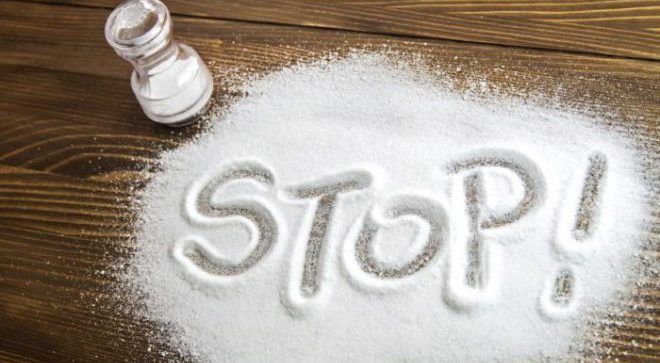
Everyone knows that margarine is not healthy, but it is still present on store shelves in huge quantities and proudly lies next to butter. Sometimes people confuse margarine and butter, and in pursuit of lower cost, make the wrong and unhealthy choice in favor of the former. Be careful when purchasing butter and read the label carefully.
Diet rules No. 10 for hypertension
Table number ten is aimed at improving heart function and has a positive effect on the genitourinary system. Such dietary nutrition will be a salvation for any person if problems arise in the body.
Calorie content should not exceed 3 thousand kcal. It is better if the dishes are steamed or stewed. Fruits can be eaten raw, as this form contains more useful components, substances necessary for the body.
Diet number 10 for hypertension, the weekly menu should adhere to the following principles:
- in the absence of edema, it is allowed to include salt (about 4 g per day);
- divide food into several meals, up to six times a day in small portions;
- there are foods that help the body get rid of unnecessary fluid;
- You are allowed to drink up to one liter of clean water per day.
Now it’s worth moving on to the item of permitted and prohibited products:
- Meat products and meat. Allowed: chicken, turkey, beef, lean pig, rabbit. Prohibited: lamb meat, pork, liver, smoked meats and sausage, goose, duck.
- Fish. Allowed: some types of fish, shrimp, mussels, and squid. Prohibited: fatty fish, caviar, preserved, salted or smoked fish.
- Soups. Allowed: vegetables, with added cereals or pasta, potatoes, as well as porridge with milk. Prohibited: with the addition of legumes, soups with fish or meat, mushrooms.
- Eggs. Allowed: soft-boiled or steamed omelette. Prohibited: boiled or fried.
- Lactic acid products. Allowed: milk, drinking yoghurts, low-fat kefir, cottage cheese, sour cream only added to dishes. Prohibited: cheeses with a high salt content and a significant percentage of fat content.
- Legumes, pasta, cereals. Allowed: any porridge cooked in water or milk, 1st grade pasta. Prohibited: legumes.
This diet is prescribed for cardiovascular diseases, problems with blood flow, hypertensive crisis and other diseases.
This dietary food is aimed at improving all processes in the body. Physiological needs are fully satisfied, since the energy value of such nutrition fully complies with the recommendations. All harmful components are excluded, so there are no negative effects on the body systems.
Hypertension: diet 10 according to Pevzner
A list of dishes and products that are recommended for consumption or require minor adjustments in composition.
Soups

Historically, we traditionally eat soups for lunch, and without liquid this meal seems incomplete to us. Soups are good because they are mostly low in calories, contain a lot of vegetables and are easily filling due to their volume.
For hypertension, it is advisable to choose low-fat soups. They should be based primarily on vegetable broth, even if it is borscht or cabbage soup. Now there are so many options for aromatic spices to make your soup tasty and fragrant without adding fatty pork or beef.
I will make a reservation that if you are overweight, try to minimize the amount of starchy vegetables in the soup, such as potatoes, carrots, beets, and eggplants. Dilute your diet with puree soups. They are quite filling and, most often, cooked in vegetable broth.
Examples of dishes: vegetable puree soup from broccoli or cauliflower, cabbage soup in vegetable broth, beet soup, lentil soup, noodle soup with mushrooms, cabbage soup, green borscht with sorrel, bean soup, rice soup.
BUT! If you, due to illness, are prone to swelling, soups should be limited. The norm is 200 ml per day. This is an ordinary small portion of soup in any cafe. If you are not a fan of soups, you can completely exclude them from your diet, but I do not recommend it. Still, soups satiate well and remove the feeling of hunger, which is important for obesity.
Bread and pastries
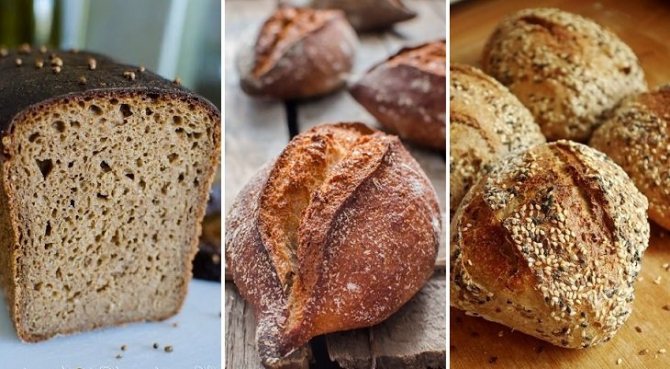
For people with normal body weight: You can safely eat bread made from rye and wheat flour. It's better to do this in small quantities. Also, if you succeed, you can replace such bread with bran bread. For lovers of buns: ideally, you can eat dry, insipid cookies like biscuits; curd cookies are also allowed.
But! It is imperative to pay attention to the fact that the composition does not contain margarine and palm oil. These products are contraindicated for you. Homemade pies with fish, lean meat - yes! You can even have this deliciousness.
The most important rule is that baked goods should not be fried in oil. I also don’t recommend Ossetian pies, which have become so popular lately. Very often, the manufacturer, in order to save on the production process, uses margarine for filling.
For people with excess body weight, it is better to leave only bread with bran in their diet. Although it has the same calorie content as regular wheat flour bread, it contains more complex carbohydrates, which will keep you full for a much longer time.
It's harder with buns. Buns, pies, cakes - all this will have to be completely excluded from the diet. But! Glory to the Internet! Nowadays there are a huge number of recipes for low-calorie desserts and baked goods made from bran. If you absolutely cannot live without sweets, then I recommend trying to make cottage cheese and fruit casseroles. It's both tasty and healthy.
Baking is a source of carbohydrates. Our body loves carbohydrates very much - it is much easier to extract energy from them than from proteins and fats. But, saturated only with simple carbohydrates (white bread and other buns), we risk gaining extra pounds. However, under no circumstances should the body be deprived of this source. Our brain requires carbohydrates to perform its functions normally, and general fatigue is guaranteed if you completely give up carbohydrates.
In order not to experience a deficiency in them, try to replace simple carbohydrates with complex ones. This means you need to eat more foods containing fiber. Fiber improves intestinal motility, slows down the absorption of glucose and reduces cholesterol levels, which is important for hypertension. In this regard, bran bread and whole grain bread are just the thing! If you are not a fan of flour products, then be sure to fill your diet with plenty of vegetables and fruits. They are the best sources of complex carbohydrates.
Fish
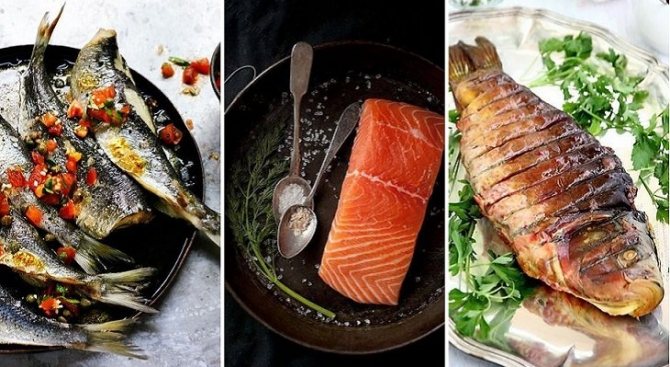
Fish is an amazing product that should definitely be included in your diet. It helps saturate the body with potassium, which is very useful for high blood pressure. Fish also contains phosphorus, which improves brain function and cerebral circulation. Some types of fish also contain selenium. This microelement improves the elasticity of muscle fibers and blood vessels in particular.
Well, the famous omega acids, where would we be without them? Now they are very popularized in the media. Regarding omega acids, there is a big misconception that they can only be obtained by eating red fatty fish (salmon, sockeye salmon). But that's not true. If your wallet does not allow you to often prepare dishes from red fish, then you need to know that ordinary herring and mackerel contain exactly the same amount of available omega acids as red fish varieties. In your choice, focus on fish that live in the northern seas.
Moreover, lipidologists advise not to replace natural sources of fatty acids with their pharmaceutical analogues. Simply put, you can buy capsules with omega-3 and fish oil at the pharmacy, but their absorption will be much lower. It is much better if you include fish in your diet on a regular basis.
You can also safely include seafood and seaweed in your diet. Seafood is generally a storehouse of microelements such as magnesium, phosphorus, potassium and iodine. At the same time, seafood is low in calories and contains a large amount of protein, and magnesium and potassium help the body maintain a feeling of fullness for a long time. So periodically entertain yourself and your family with unusual dishes of squid, mussels or octopus.
Meat and poultry
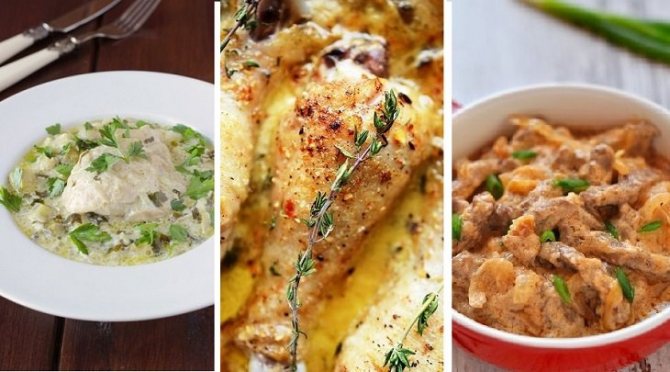
Excluding animal meat from the diet is not recommended due to the fact that this is the easiest and most affordable way to get protein from food. And protein, as we know, is a building material for our body - these are the bricks from which the frame of a healthy and beautiful body is built.
Fatty meats are not recommended. They contain large amounts of fat, which is a direct source of cholesterol. It is also recommended to limit the consumption of red meat, but you should not completely eliminate it, as it is a good source of iron. Red meats include beef, lamb, pork, chicken drumsticks and duck.
It is better to take white meats as the basis of your diet - chicken and turkey breasts, rabbit and veal. The ideal option is if you eat the meat boiled and stewed, but you can also bake it in the oven. It is better to avoid grilling or frying.
Vegetables
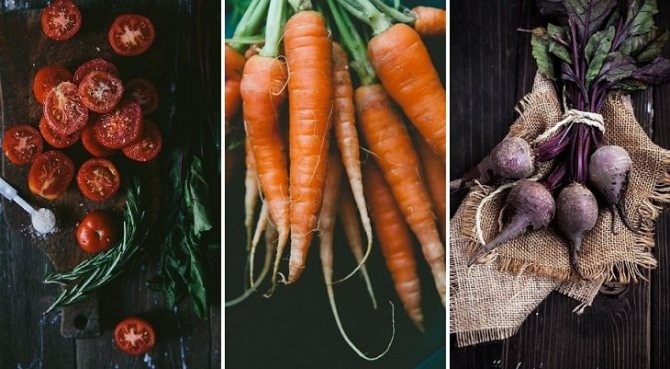
Vegetables are a source of vitamins, microelements and fiber. You are allowed to eat almost any vegetables in any quantity. It’s better, of course, if they are fresh, but you can also bake and grill them. I don't recommend frying it. Fried potatoes are not a dish that will help you become healthier. And, again, if you are obese, try to eliminate starchy vegetables from your diet.
Vegetables should make up at least a third, and preferably half, of your daily diet.
Nowadays you can find almost any vegetables on the market at any time of the year. Among them, broccoli is considered a special storehouse of vitamins. This vegetable, which they like to use to intimidate naughty children, is actually very good for our heart and blood vessels. Broccoli contains a large amount of carotene, vitamin C and other microelements. Regular consumption of broccoli will help lower cholesterol levels and stop the formation of atherosclerotic plaques.
Pumpkin, like broccoli, contains a lot of beta-carotene, potassium and vitamin C, which also helps fight cholesterol and normalize water-salt balance in the body. By the way, you can prepare a huge number of dishes from pumpkin, starting with cream soup for starters, ending with pumpkin pie or pudding for dessert. Pumpkin keeps well for a long time and is usually not expensive at all.
Carrots have similar properties to pumpkin. But bell peppers, in addition to huge reserves of vitamin C, also contain folic acid. It is also very healthy and recommended for use all year round.
Fruits
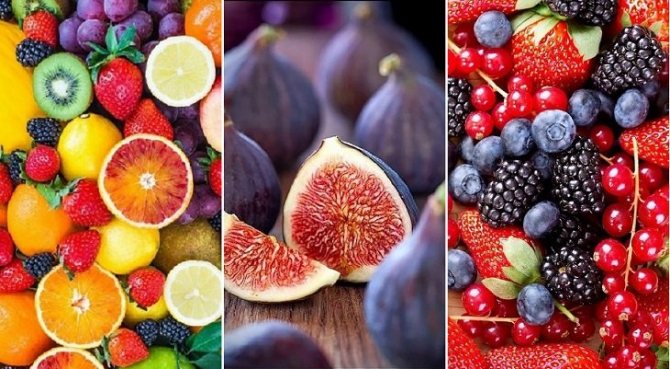
They are allowed in any quantity. Eat grapes and bananas with caution and without fanaticism. They contain a large amount of sugars. Although bananas are a natural source of potassium, which is very good for the heart.
Apricots are considered one of the most beneficial for the heart muscle and blood vessels; they also contain a lot of potassium and other vitamins. It is believed that apricots reduce the risk of developing cancer, improve blood supply to the brain and vascular tone.
Pomegranate and pomegranate juice are a source of iron, which our body needs, as it is part of hemoglobin and is a natural carrier of oxygen through the bloodstream to organs and tissues. Cherries and avocados are also an irreplaceable source of potassium.
Avocados also contain iron and B vitamins. Avocados, like apples native to our latitudes, darken when cut - this is precisely evidence of the presence of iron. Avocados contain polyunsaturated fatty acids, which reduce the risk of developing cardiovascular diseases and improve vascular tone.
Apples are a commonly available fruit that are essential for replenishing iron levels in the blood. They are rich in vitamin C, A, B vitamins and microelements. Fresh apples are the most beneficial, so it is better to eat this fruit in early autumn - just when the harvest is underway.
It's great if you include fruit in your breakfasts, lunches and snacks, and choose protein for dinner.
I would also like to mention dried fruits. This is a tasty, sweet and, most importantly, healthy treat. Dried apricots, raisins, dried pears, apples and figs are good alternatives to sweets. Dried fruits retain a huge amount of vitamins and microelements throughout the year, plus they are stored well. Dried fruits make excellent compotes and pie fillings.
Eggs
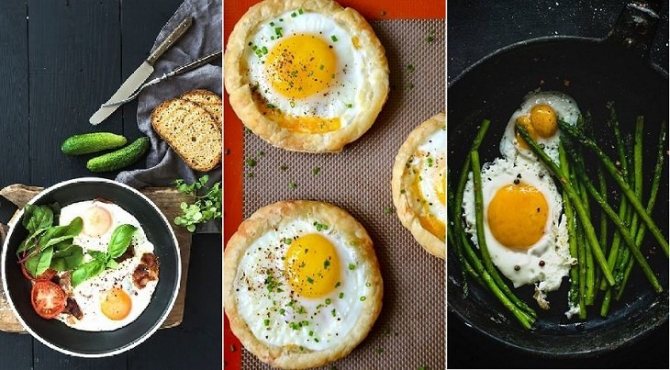
For a long time, this product was undeservedly expelled from the diet of hypertensive patients. It was believed that the yolk contains a large amount of cholesterol. But now, after many years of observation, it has been proven that eggs in the diet are beneficial, and it is not recommended to exclude them from the diet. Egg white contains a huge number of essential amino acids. It is very easily and almost completely digestible, so its benefits as a source of protein are priceless. The yolk contains a huge amount of vitamins, both water-soluble and fat-soluble.
Oddly enough, the healthiest option is scrambled or soft-boiled eggs. Behind this statement is a fairly long study by Canadian scientists who compared the benefits and digestibility of eggs depending on the method of their preparation. Based on their own research, it was proven that reasonable consumption of eggs helps to lower blood pressure. This occurs due to special peptides contained in eggs.
The same peptides were found in lactic acid products. Eggs also have an excellent antioxidant effect, and thanks to lecithin they promote the breakdown of fats and better absorption of vitamins. Contraindications to eating eggs are allergic reactions, since eggs are a fairly strong allergen.
As a result, you need to approach this situation calmly: do not avoid eggs, but do not eat them in excess. 5-7 eggs per week is a completely adequate amount, which certainly won’t do any harm.
Dairy
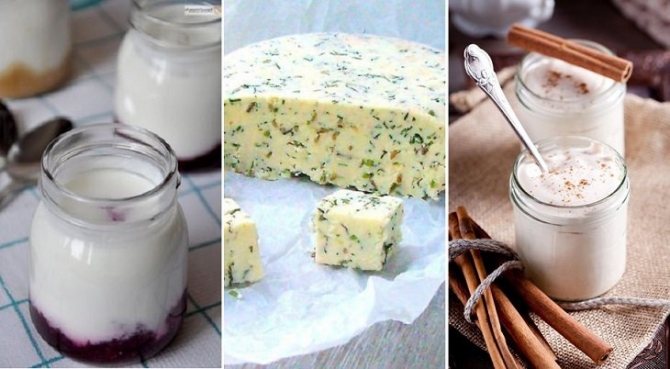
Fermented milk products can be safely consumed. This, of course, does not mean that you can eat homemade sour cream with spoons. But fermented baked milk, kefir, matsoni and other lactic acid products with low fat content are quite healthy. Don't go for low-fat foods. Low-fat dairy products are poorly digestible, and the body also needs fats. They ensure the production of collagen and are responsible for the elasticity of blood vessels.
Cottage cheese and cottage cheese casseroles are an excellent base for desserts. Cottage cheese itself is a source of potassium, magnesium and calcium. Cottage cheese dishes are quite filling due to their high protein content. They add great variety to your diet.
It is better to choose low-fat cheeses. An excellent option is unsalted cheese, Adyghe cheese, suluguni. These are young cheeses and contain less salt and fat than aged hard cheeses. In any case, cheese is a product whose benefits and harms must be correlated and consumed in moderation.
Seasonings
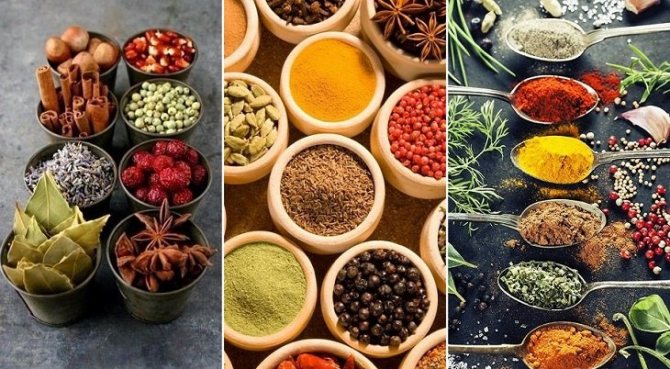
When preparing various dishes, you should try to select seasonings carefully. Choose seasonings based on dried herbs, but try to avoid too hot and spicy seasonings, as spicy food increases the heart rate and increases the feeling of hunger and thirst. Ideally, try to eliminate hot spices and foods from your diet altogether. The same situation applies to vinegar. A little bit is possible, but the main thing is not to overdo it. Try to limit marinades and avoid consuming them.
Porridge
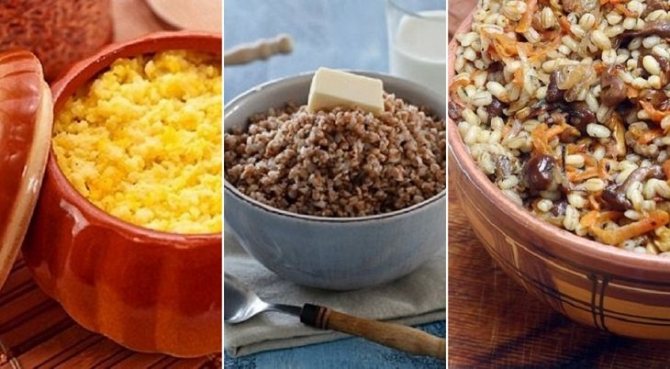
Porridges are an integral part of the diet of hypertensive patients. These are sources of complex carbohydrates, irreplaceable as side dishes and can diversify the diet well.
Focus on buckwheat, oatmeal, barley porridge, bulgur and millet. Oatmeal and oat-based cereals contain large amounts of selenium. You can use them to cook delicious breakfasts with fruits and nuts, or make casseroles.
Millet porridge contains a lot of magnesium and microelements; it is quite filling and easy to prepare. Millet reduces the risk of developing type 2 diabetes, so we advise you to pay attention to it.
Buckwheat porridge is a source of B vitamins, potassium, and magnesium. Buckwheat helps normalize metabolism and improve the functional properties of the gastrointestinal tract.
Rice and cereals based on it are quite high in calories and contain a large amount of starch. It is better to buy unpolished or wild rice. It does not lose most of the nutrients during processing and contains less starch. Rice is good because it is an excellent sorbent. It perfectly removes waste and toxins. But it is better not to overuse rice dishes. They are quite high in calories.
Try to exclude semolina porridge from your diet. It contains a large amount of fast carbohydrates, is quickly digested and does not keep you feeling full for long.
It is also not recommended to eat instant porridge; they contain less dietary fiber, since the grain for them is processed mechanically. Such cereals are quickly digested and contain much less nutrients, but more sugars. So their benefit is questionable. It is better to use regular porridges that require cooking.
The essence of the diet
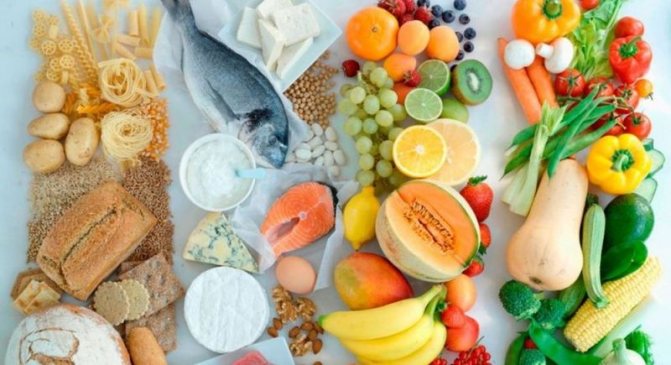
Following a diet increases the potassium content in the body, which has a beneficial effect on the heart and blood vessels
The second name is “table number 10”, and the main essence is improving metabolism, kidney, liver, gastrointestinal tract function, as well as normalizing blood circulation and the functioning of the cardiovascular system. This is facilitated by:
- Eliminating salt and spicy foods from the diet;
- Reducing daily calorie and fluid intake;
- An increase in the body’s content of potassium, magnesium, as well as amino acids that help normalize cholesterol levels.
Cooking is done primarily by steaming or boiling, strictly without adding salt.
Varieties of therapeutic diet No. 10
There are several variations of the tenth table. The differences are not global, but important. Diets, depending on the assigned letter, provide an individual approach to the treatment of patients with different diseases and differences in their course.
- A. If cardiac pathology has led to circulatory disorders of the second and third degree, diet No. 10a is prescribed.
- B. If rheumatism goes into remission, and its acute course does not provoke serious blood flow disturbances, use table No. 10b.
- C. In the complex treatment of ischemic heart disease, hypertension, atherosclerotic lesions of peripheral and central vessels, diet No. 10c is prescribed.
- R. For rheumatoid arthritis in any phase, and regardless of the location of the inflammation, table No. 10r is prescribed.
- D. Prolonged and persistent excess of normal blood pressure is called essential hypertension. Table No. 10g is indicated for treatment.
- I. After a heart attack, a person needs not only medical assistance, but also a restorative diet No. 10i.
The main requirement that unites all options of the tenth table: maintain the ratio of proteins, fats, carbohydrates (BJU) in the diet. Each “letter” has its own ratio.
What can you eat
Recommended products help improve digestion, the functioning of the cardiovascular system, remove excess fluids from the body and reduce cholesterol levels. These products include:
- Meat - chicken breast, rabbit, turkey;
- Fish - pike perch, cod, pike and other low-fat varieties;
- Vegetables, fruits, herbs and cereals - any;
- Beans - any (in limited quantities);
- Pasta - any (in small quantities);
- Chicken eggs - maximum 3-4 pieces per week;
- Bread products - wholemeal bread, diet bread, homemade crackers;
- Drinks - jelly, compotes, green tea, any juices, with the exception of cherry, pineapple and red grapes;
- Dried fruits and sweets in limited quantities - honey, mousse, jelly, raisins, marshmallows, dried apricots, biscuits;
- Low-fat cheeses, dairy and fermented milk products.
Authorized Products
Diet 10 is designed to improve heart function, increase the endurance of the heart muscle, and reduce the tendency to edema caused by excess salt in food. Therefore, salt is added only to prepared dishes in small quantities; it can be replaced with spices, lemon juice or fresh herbs. The disease is caused by the presence of cholesterol on the walls of blood vessels, which causes changes in their lumen. The menu should contain products that contain minimal cholesterol. For hypertension, it is recommended to include in the diet:
- Fruits and vegetables. You can eat all varieties of cabbage, cucumbers, zucchini and squash, bell peppers, carrots, various greens, seaweed, green apples. It is also acceptable to eat dried fruits and dark chocolate.
- Pasta products only from durum wheat flour, bread baked at home from low-grade flour mixed with rye. Rye bread may also be present, but in small quantities. Yeast-free baked goods are healthy.
- Various vegetable oils.
- Raw sunflower seeds, walnuts.
- Lean meat, preferably chicken breast, rabbit, lamb, turkey
- Fish and seafood. They can completely replace meat.
- Boiled eggs, omelet.
- Low-calorie dairy products.
- Zlakov. Porridges from them should be cooked in water.
- Rosehip decoction and herbal infusions that lower blood pressure. Freshly squeezed fruit and berry juices are beneficial.
Important information: How to treat systolic-diastolic hypertension
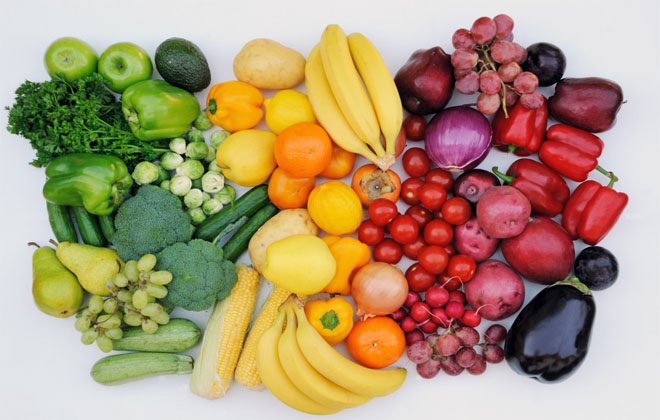
What not to do
The following foods should be excluded from the diet if you have arterial hypertension, as they interfere with the healing process:
- Raw vegetables that contribute to painful bloating (radish, cabbage, potatoes, spinach, green peppers and others);
- Alcoholic and carbonated drinks;
- Coffee, black tea;
- Beans and mushrooms;
- Meat and fish of fatty varieties;
- Sauces, ketchups, spicy and hot seasonings;
- Any canned food (meat, vegetables, fruit);
- Saltiness and smokedness;
- Fast food products;
- Confectionery and baked goods;
- Fatty dairy and fermented milk products;
- Fatty cheeses.
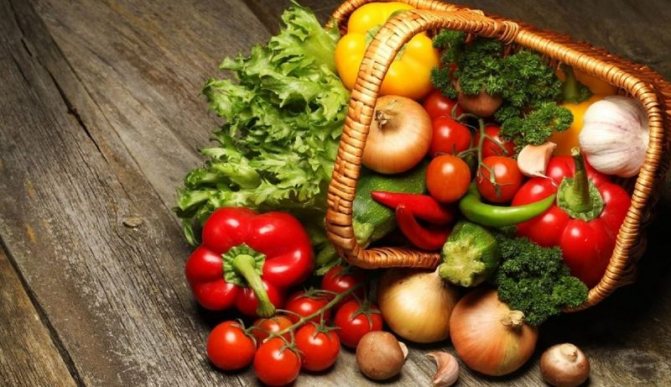
When dieting “Table number 10” you need to eat boiled or steamed food
Sample menu
The diet can be adjusted, but only so that the total calorie content of all dishes does not exceed the daily norm. Example: Pike perch can be replaced with pike, chicken breast with turkey, rice with buckwheat, bread with crispbread, apple with banana, and the like. The table shows an approximate menu of diet number 10 for hypertension, which corresponds to the recommended calorie values:
| Day of the week | Dishes |
| Mon | Breakfast - a soft-boiled chicken egg, millet porridge with milk (low-fat), rosehip tea; Second breakfast - fruit puree, you can add a little natural honey; Lunch - light vegetable soup, meatballs, vegetable salad; Afternoon snack - low-fat cottage cheese or yogurt; Dinner - fish and vegetables, steamed or boiled, low-fat kefir. |
| W | Breakfast - low-fat cottage cheese, some dried fruits, unsweetened tea; Second breakfast - grated vegetables (carrots, beets, pumpkin). You can season with a little olive oil; Lunch - light pearl barley soup, chicken cutlets, steamed broccoli, a slice of bread; Afternoon snack - one apple or 50 grams of dried fruits; Dinner - vegetable or cottage cheese casserole, jelly. |
| Wed | Breakfast - potato dumplings with a little butter, freshly squeezed fruit juice; Second breakfast - carrot pudding or any fruit; Lunch - light rice soup, meatballs, fresh vegetables and herbs, one piece of bread; Afternoon snack - rosehip broth, bread; Dinner - steamed fish zrazy with egg, boiled rice, unsweetened tea. |
| Thu | Breakfast - semolina porridge with low-fat milk, dried fruit compote; Second breakfast - vegetable or fruit puree; Lunch - cabbage soup (vegetarian) without overcooking, boiled chicken breast, boiled potatoes sprinkled with herbs; Afternoon snack - any fruit or vegetable; Dinner - low-fat cottage cheese, fish and steamed cereals. |
| Fri | Breakfast - an omelet from one chicken egg with low-fat milk, maybe with a tomato, rosehip broth; Second breakfast - biscuits with dried fruit compote; Lunch - light soup with pasta, steamed meat and vegetables; Afternoon snack - low-fat cottage cheese, unsweetened tea; Dinner - boiled fish with steamed vegetables with fresh herbs. |
| Sat | Breakfast - rice porridge with low-fat milk, unsweetened tea with biscuits; Second breakfast - carrots and applesauce with olive oil or natural honey; Lunch - potato soup, chicken baked with tomatoes and fresh herbs; Afternoon snack - applesauce and banana, half a glass of low-fat kefir; Dinner - fish meatballs with tomato sauce, boiled buckwheat, fresh herbs; |
| Sun | Breakfast - soft-boiled egg, oatmeal with apple, unsweetened tea; Second breakfast - fruit puree or fresh fruit; Lunch - milk soup with pasta, boiled meat, zucchini pancakes, a slice of bread; Afternoon snack - vegetable salad with herbs and olive oil; Dinner - Fish baked with tomatoes, cheese and herbs, rosehip tea. |
Diet number 10 for hypertension is not dangerous to health, but nevertheless, before starting it, you should consult your doctor. If there are no contraindications, then you can safely begin therapy.
Remember, the most important thing is to follow the recommendations, because this is what the final result will depend on. In addition to the fact that diet helps improve the course of the disease, you can improve the effect at any time and consolidate it for a long time. To do this, you need to protect yourself from stressful situations that have a detrimental effect on the heart and go in for sports.
Materials used in the article:
https://boleznikrovi.com/serdce/gipertoniya/dieta-10-menyu-na-nedelyu.html
https://gipertonia.guru/narodnye-metody/dieta-nomer-10-pri-gipertonii/
https://ymadam.net/zdorove/sdaem-analizy/bolezni-po-analizu-krovi.php
Post Views: 74

